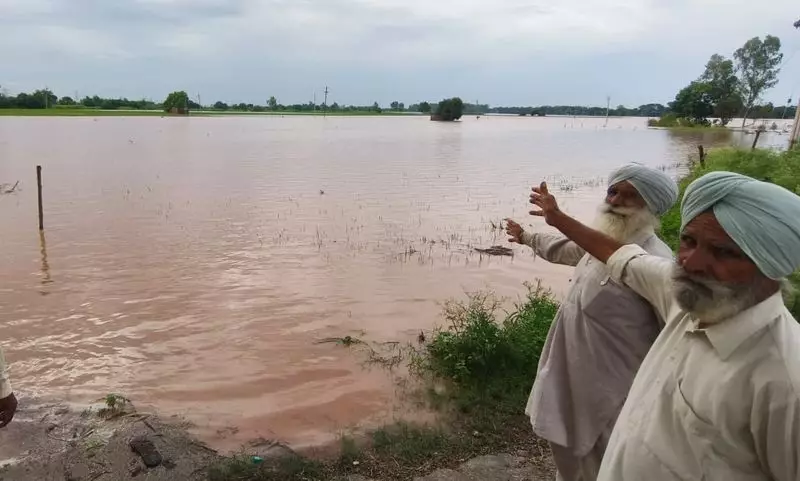
In a cruel twist of fate, the monsoon that Indian farmers prayed for has now become their worst nightmare. What began as a promising season has turned disastrous as unseasonal late downpours have devastated crops across multiple states, leaving agricultural communities facing financial ruin.
The Promise That Turned Sour
After initial optimism with timely monsoon arrivals, farmers across northern and central India invested heavily in sowing their fields. The crops were flourishing, and harvest season was approaching with expectations of good yields. However, nature had other plans.
Unexpected heavy rains in September and October, when crops were at their most vulnerable stage, have caused widespread destruction. Standing crops ready for harvest have been flattened, waterlogged, or destroyed completely in what farmers are calling an agricultural catastrophe.
Ground Reports: A Nationwide Crisis
The damage spans across crucial agricultural states:
- Punjab and Haryana: The rice bowl of India has seen extensive damage to paddy crops just days before harvesting
- Madhya Pradesh and Rajasthan: Soybean and pulse crops have been severely affected
- Uttar Pradesh: Vegetable crops and sugarcane plantations have suffered massive losses
- Maharashtra: Cotton and soybean farmers are counting their losses
Farmer Distress Reaches Breaking Point
"We invested everything we had in this crop," says a distraught farmer from Punjab. "Now, with the rains destroying everything just before harvest, we don't know how we'll recover or even feed our families."
The financial implications are staggering. Many farmers took loans for seeds, fertilizers, and labor, expecting to repay them after the harvest. With their crops destroyed, they face mounting debts with no means of repayment.
Broader Economic Implications
This agricultural disaster extends beyond individual farmers. The damage threatens to:
- Increase food prices across the country
- Impact India's food security calculations
- Strain government resources for relief measures
- Affect export commitments for agricultural products
Climate Change: The Unseen Culprit
Meteorologists point to changing weather patterns as a key factor behind these unseasonal rains. The increasing frequency of such extreme weather events raises serious questions about climate resilience in Indian agriculture and the need for better forecasting systems.
As farmers pick up the pieces and government agencies assess the damage, one thing is clear: India's agricultural sector needs urgent adaptation strategies to cope with the new reality of unpredictable monsoons and extreme weather events.





